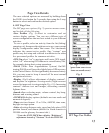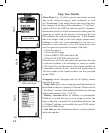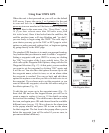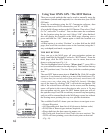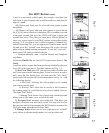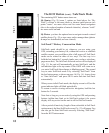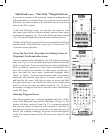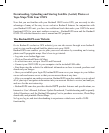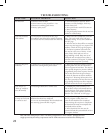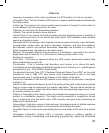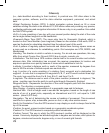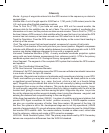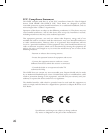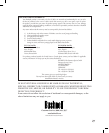
25
•Route: A group of waypoints entered into the GPS receiver in the sequence you desire to
navigate them.
•Statute Mile: A unit of length equal to 5,280 feet or 1,760 yards (1,609 meters) used in the
U.S. and some other English-speaking countries.
•Time To First Fix (TTFF): If you have not used your GPS unit for several months, the
almanac data for the satellites may be out of date. The unit is capable of recollecting this
information on its own, but the process can take several minutes. Time to First Fix (TTFF) is
the time it takes a GPS receiver to nd satellites after the user rst turns it on (when the GPS
receiver has lost memory or has been moved over 300 miles from its last location).
Track Up Orientation: Fixes the GPS receiver’s map display so the current track heading is
at the top of the screen.
•Trail: The actual course that has been traveled, composed of a series of trail points.
•True North: The direction of the north pole from your current position. Magnetic compasses
indicate north differently due to the variation between true north and magnetic north. A GPS
receiver can display headings referenced to true north or magnetic north.
•Universal Transverse Mercator (UTM): A nearly worldwide coordinate projection system
using north and east distance measurements from reference point(s). UTM is the primary
coordinate system used on U.S. Geological Survey topographic maps.
•User Segment: The segment of the complete GPS system that includes the GPS receiver
and operator.
•UTC: See Coordinated Universal Time.
•UTM: See Universal Transverse Mercator.
•Waterproof: An IPX7 designation means the GPS case can withstand accidental immersion
in one meter of water for up to 30 minutes.
•Waypoints: Waypoints are locations or landmarks worth recording and storing in your GPS.
These are locations you may later want to return to. They may be check points on a route
or signicant ground features. (e.g., camp, the truck, a fork in a trail, or a favorite shing
spot). Waypoints may be dened and stored in the unit manually by taking coordinates for
the waypoint from a map or other reference. This can be done before ever leaving home.
Or more usually, waypoints may be entered directly by taking a reading with the unit at the
location itself, giving it a name, and then saving the point. Waypoints may also be put into
the unit by referencing another waypoint already stored, giving the reference waypoint, and
entering the distance and compass bearing to the new waypoint.
•Wide Area Augmentation System (WAAS): A system of satellites and ground stations that
provide GPS signal corrections for better position accuracy. A WAAS-capable receiver
can give you a position accuracy of better than three meters, 95 percent of the time. (At
this time, the system is still in the development stage and is not fully operational.) WAAS
consists of approximately 25 ground reference stations positioned across the United States
that monitor GPS satellite data. Two master stations, located on either coast, collect data
from the reference stations and create a GPS correction message.
•WGS-84: World Geodetic System, 1984. The primary map datum used by GPS. Secondary
datums are computed as differences from the WGS 84 standard.
Glossary



